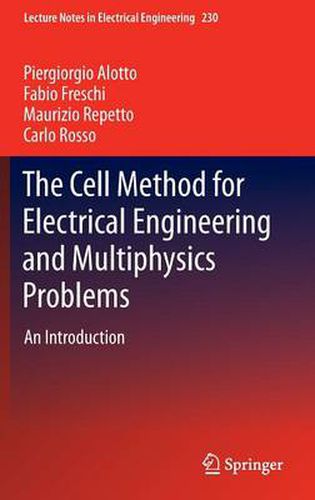Readings Newsletter
Become a Readings Member to make your shopping experience even easier.
Sign in or sign up for free!
You’re not far away from qualifying for FREE standard shipping within Australia
You’ve qualified for FREE standard shipping within Australia
The cart is loading…






This title is printed to order. This book may have been self-published. If so, we cannot guarantee the quality of the content. In the main most books will have gone through the editing process however some may not. We therefore suggest that you be aware of this before ordering this book. If in doubt check either the author or publisher’s details as we are unable to accept any returns unless they are faulty. Please contact us if you have any questions.
This book presents a numerical scheme for the solution of field problems governed by partial differential equations: the cell method. The technique lends itself naturally to the solution of multiphysics problems with several interacting phenomena. The Cell Method, based on a space-time tessellation, is intimately related to the work of Tonti and to his ideas of classification diagrams or, as they are nowadays called, Tonti diagrams: a graphical representation of the problem’s equations made possible by a suitable selection of a space-time framework relating physical variables to each other. The main features of the cell method are presented and links with many other discrete numerical methods (finite integration techniques, finite difference time domain, finite volumes, mimetic finite differences, etc.) are discussed. After outlining the theoretical basis of the method, a set of physical problems which have been solved with the cell method is described. These single and multiphysics problems stem from the authors’ research experience in the fields of electromagnetism, elasticity, thermo-elasticity and others. Finally, the implementation of the numerical technique is described in all its main components: space-time discretization, problem formulation, solution and representation of the resulting physical fields.
$9.00 standard shipping within Australia
FREE standard shipping within Australia for orders over $100.00
Express & International shipping calculated at checkout
This title is printed to order. This book may have been self-published. If so, we cannot guarantee the quality of the content. In the main most books will have gone through the editing process however some may not. We therefore suggest that you be aware of this before ordering this book. If in doubt check either the author or publisher’s details as we are unable to accept any returns unless they are faulty. Please contact us if you have any questions.
This book presents a numerical scheme for the solution of field problems governed by partial differential equations: the cell method. The technique lends itself naturally to the solution of multiphysics problems with several interacting phenomena. The Cell Method, based on a space-time tessellation, is intimately related to the work of Tonti and to his ideas of classification diagrams or, as they are nowadays called, Tonti diagrams: a graphical representation of the problem’s equations made possible by a suitable selection of a space-time framework relating physical variables to each other. The main features of the cell method are presented and links with many other discrete numerical methods (finite integration techniques, finite difference time domain, finite volumes, mimetic finite differences, etc.) are discussed. After outlining the theoretical basis of the method, a set of physical problems which have been solved with the cell method is described. These single and multiphysics problems stem from the authors’ research experience in the fields of electromagnetism, elasticity, thermo-elasticity and others. Finally, the implementation of the numerical technique is described in all its main components: space-time discretization, problem formulation, solution and representation of the resulting physical fields.